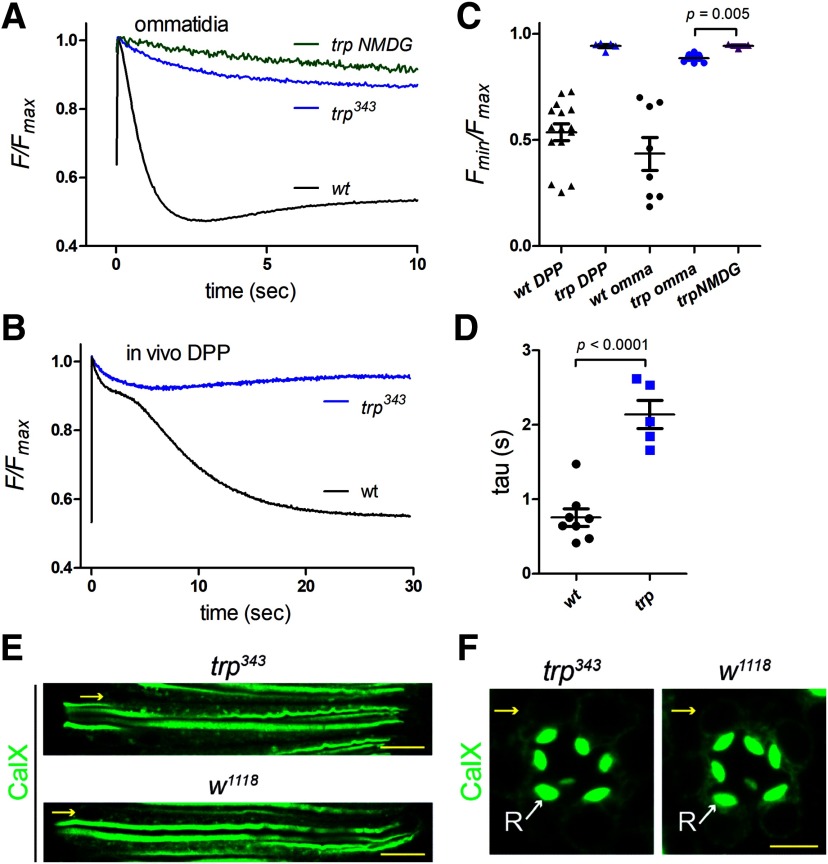Figure 9.
trp mutants are resistant to store depletion. A, ER-150 fluorescence in dissociated ommatidia from wild-type (data from Fig. 3) and null trp343 mutants (average trace, n = 6 ommatidia, 3 flies). Only ∼ 10% rapid depletion was detected in trp. This was likely still due primarily to Na+/Ca2+ exchange because it was largely prevented by perfusion with NMDG+ substituted for Na+ (trp NMDG). B, Similarly, store depletion measured in vivo (from DPP) in trp mutants (n = 6) was much less pronounced than in wild-type flies. Wild-type data replotted from Figure 6. C, Minimum ER-150 fluorescence values reached in trp343 mutants were much less (p < 0.0001 on two-tailed t tests) than in wild-type (wt); but NMDG perfusion still suppressed depletion further. In vivo DPP values are minimum values reached over 30 s; values from dissociated ommatidia (omma) are from rapid depletion phase only (4–10 s). D, Time constant of rapid depletion phase from dissociated ommatidia (single exponential fits) was ∼twofold slower in trp343 mutants. E, Longitudinal optical sections of ommatidia stained for anti-Calx in trp343 and wild-type control (w1118). Scale bar, 10 µm. F, transverse optical sections; yellow arrows, perinuclear ER; white arrows (R), rhabdomere. Scale bar, 5 µm.

